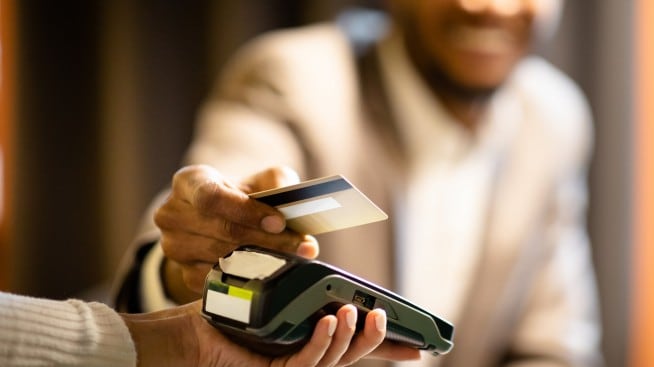How to identify and report credit card fraud

Credit card fraud is a large problem, with the Federal Trade Commission (FTC) collecting more than 167,000 reports of fraudulent credit card activity in 2018.
The good news: If you are a victim of credit card fraud, your responsibility for the fraudulent charges will be capped at $50 and-with many card issuers-you won't be responsible for any charges made to your account. But reporting credit card fraud through the proper channels is just the first step. In addition to filing fraud reports and ordering a new card, you should consider putting a credit freeze on your accounts and checking your financial statements on an ongoing basis for any unusual activity.
Understanding the difference between credit card fraud and identity theft
Identity theft takes place when a person's key identifying information, such as their name or Social Security Number, is wrongfully obtained and used for economic gain or some other malicious purpose.
Credit card fraud occurs when a consumer's credit card account is used without their permission or a new account is created in their name.
Types of credit card fraud
Credit card fraud can take many different forms. Here are the main things to watch out for:
- Lost or stolen cards
A card may be picked up and used after falling from your pocket, or get taken from your wallet or mailbox. Both of these situations are considered fraud.
- Account takeovers
Takeovers occur when a fraudster contacts your card issuer and pretends to be you, then orders a new card to their address.
- Counterfeit cards
Electronic devices, like skimmers, can be used by fraudsters to copy your card information when they use it to debit your account, and then reprint it on another card.
- "Card Not Present" (CNP) transactions
If a fraudster acquires your card number and uses it without the physical card present-e.g., in an online purchase-this constitutes a CNP transaction.
- Falsified credit applications
Many card issuers mail out "pre-approved" credit card offers. A fraudster can intercept one of these offers and complete it to get a new card in their name. While credit card applications from major card issuers will require many different proofs of identity to finalize approval and prevent fraudsters from opening these pre-approved lines of credit, victims of identity theft should review their credit report regularly to avoid fraud.
How to report credit card fraud
If you think you see fraudulent activity on your card, however, don't hesitate to take action and contact your credit card issuer to make a report. You won't be liable for transactions made without your authorization, but it's important to put a stop to fraud as quickly as possible.
Start with your card issuer
- Contact your card issuer via the phone number on the back of the card or the issuer website's live-agent chat.
- Tell the customer service representative that you think you were the victim of fraud. The agent may have you confirm recent transactions to be sure any authentic purchases are processed correctly.
- Ask for your account(s) to be suspended or closed. Be sure to change any passwords or PINs you think may have been compromised.
Contact the credit bureaus
- Reach out to one of the three bureaus (Equifax®, Experian™ or TransUnion®); confirm your identity and ask for a free fraud alert to be linked to your report. Once the alert is placed, it will become much harder for fraudsters to use your information maliciously. Note that you only need to order a fraud alert with one bureau: the others will be notified automatically.
- You can extend the default fraud alert lifespan (one year) to seven years, but you'll need a police report or the Federal Trade Commission report to do this.
Notify the authorities
- Fill out an identity theft report with the FTC at IdentityTheft.gov. The FTC is a federal law enforcement agency, so if you inform them that you are the victim of fraud, you won't have to file a police report locally.
- If you do opt to file a police report, bring the Identity Theft Report that you complete for the FTC, and make sure you make a copy for your records.
Protect your identity and prevent credit card fraud in the future
When you know how credit card fraud occurs, you can take steps to prevent fraud in the future.
Understand the threats
This guide is just one of the many resources available to understand and combat identity theft-including credit card fraud. Browse the FTC and Consumer Financial Protection Bureau (CFPB) websites for more guidance on the forms that identity theft can take.
Carefully review your credit card statements
Sometimes, the first evidence of credit card fraud is on your card statements. To maintain even more control of your card account, use your bank's mobile app or website to regularly verify charges.
Order your free credit report as often as you can
You can order one free credit report annually from each of the credit bureaus. Consider rotating your free credit reports: by getting one every four months, you can stay informed of any reported changes to your credit profile.
Protect your information, online and off
Shred any piece of paper that has your credit card number on it, and don't write down your card number anywhere that thieves might be able to access it.
Also, be vigilant about protecting your card use online by only filling out card information on websites you trust. You can look for the lock icon in your browser's address bar to be sure you're buying from a secure site.
Watch for and report credit card fraud
Credit card fraud can happen to anyone, so remember to practice good data management to keep your personal information out of fraudsters' hands.



